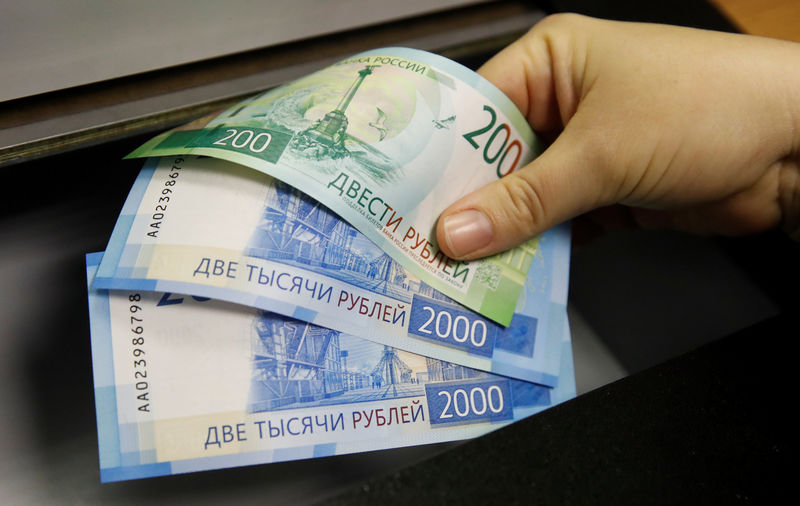MOSCOW (Reuters) - The ruble hit its weakest level in two weeks on Wednesday, tracing moves in other emerging-market currencies that came under pressure from investors' fears over global trade tensions.
At 0746 GMT, the ruble was 0.5 percent weaker against the dollar at 68.44
Geopolitical concern was in focus, after the Kremlin dismissed U.S. President Donald Trump's warning to Syria not to launch an offensive in the rebel-held enclave of Idlib, saying that the area was a "nest of terrorism".
The ruble could feel downside pressure from the situation in Syria as well as from the "negative emotional background" in other emerging markets, said Mikhail Poddubsky, an analyst at Promsvyazbank.
Russian assets also remained under pressure from concern about new U.S. sanctions, which could imposed restrictions on investment in new Russian sovereign debt.
But the ruble gained some support from the central bank after Governor Elvira Nabiullina indicated on Monday the board of directors would chose between holding and raising its key interest rate at the next rate-setting meeting, on Sept. 14.
Nabiullina's words shook the bond market where yields of 10-year government bonds, which move inversely to prices, rose to 8.87 percent (RU10YT=RR) for the first time since late 2016.
The market also keeps an eye on the finance ministry's plan to replenish its reserves under the so-called budget rule. In September, however, this plan would not envisage state buying of dollars on the market as the central bank said it won't resume daily FX purchases until October.
Having supported Russian assets the day before, oil prices declined as a tropical storm near the U.S. Gulf coast weakened. Brent crude oil (LCOc1), a global benchmark for Russia's main export, was down 0.77 percent at $77.59 a barrel.

Russian stock indexes went lower. The dollar-denominated RTS index (IRTS) lost 0.7 percent to 1,075.08 points, while its rouble-based peer MOEX (IMOEX) was 0.05 percent lower at 2,335.16 points.